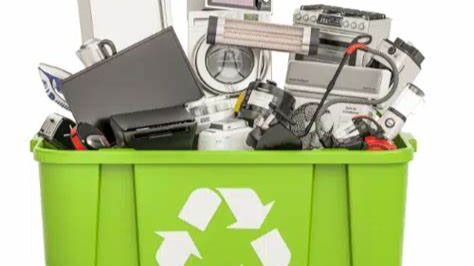E-Waste Recycling: How Does It Work?
What Is E-Waste Recycling?
E-waste recycling is not recycling in the traditional sense — old electronics are not crushed and remade into new devices.
Instead, the process focuses on recovering valuable materials contained within electronic equipment.
Every computer, phone, or TV includes metals, plastics, and components that can be reused — if handled correctly.
How Does E-Waste Recycling Work?
1. Collection and Drop-Off
The process begins with the proper collection of e-waste.
Consumers can bring their old electronics to:
- Collection yards,
- Special e-waste containers, or
- Retail stores that offer take-back programs.
Manufacturers and importers of electrical equipment are legally required to fund e-waste collection systems according to environmental laws.
2. Sorting and Manual Disassembly
Collected e-waste is sent to specialized recycling facilities, where it undergoes manual disassembly.
Here, workers separate materials such as plastics, glass, metals, and electronic components.
Some parts, especially those containing hazardous substances like mercury from old screens or capacitors, require special handling and safety procedures.
3. Mechanical Processing
Once separated, materials are processed using industrial shredders and separation technologies:
- 🧲 Magnetic separation – isolates ferrous and non-ferrous metals.
- ⚡ Electrostatic separation – divides plastic and metal components.
- ❄️ Cryogenic grinding – uses liquid nitrogen to freeze and pulverize materials into fine powder for easier sorting.
This stage reduces waste to base materials ready for refining.
4. Chemical Recovery of Precious Metals
E-waste contains valuable metals like gold, silver, copper, and zinc, which are extracted using chemical and electrochemical processes:
- Cyanide leaching – for gold extraction.
- Electrolysis – to recover metals such as copper or zinc.
- Lead smelting – separates precious metals from mixed residues.
These recovered metals are then reintroduced into industrial production — for example, in electronics, automotive components, or jewelry.
5. Reuse and Safe Disposal
Recycled materials are reused in the manufacture of new products.
Non-recyclable residues are either safely incinerated or disposed of in controlled landfills.
Some components can even be refurbished or repurposed for secondary use, extending their lifecycle.
Conclusion
E-waste recycling is a complex process combining manual labor, mechanical separation, and chemical refinement.
While recycling is crucial to recover valuable resources and reduce pollution, the best long-term solution lies in waste prevention — by using electronics longer, repairing instead of replacing, and choosing products designed for durability and repairability.
Each properly recycled device is a small but vital contribution to reducing the environmental footprint of modern technology.

